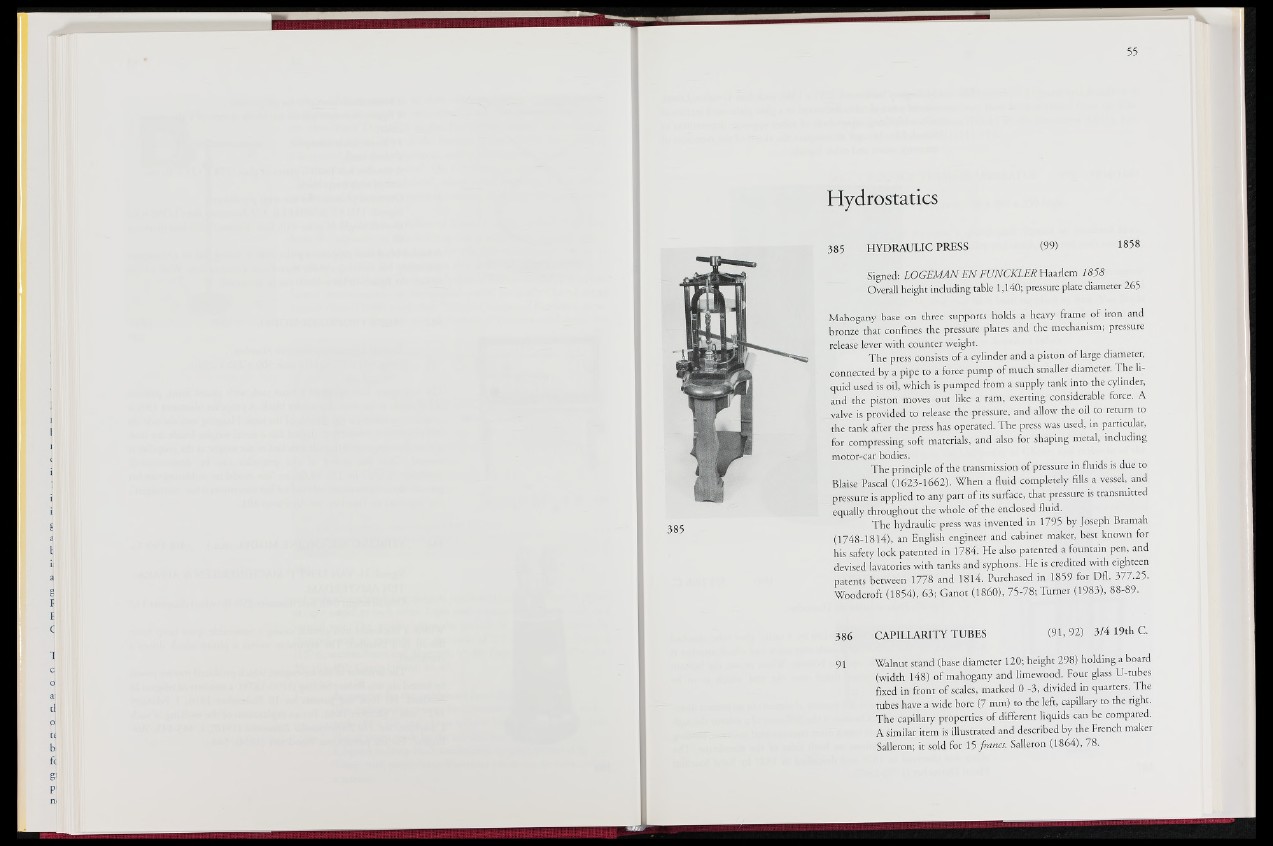
Hydrostatics
385 HYDRAULIC PRESS (99) 1858
Signed: LOGEMAN EN FUNCKLER Haarlem 1858
Overall height including table 1,140; pressure plate diameter 265
Mahogany base on three supports holds a heavy frame of iron and
bronze that confines the pressure plates and the mechanism; pressure
release lever with counter weight.
The press consists of a cylinder and a piston of large diameter,
connected by a pipe to a force pump of much smaller diameter. The liquid
used is oil, which is pumped from a supply tank into the cylinder,
and the piston moves out like a ram, exerting considerable force. A
jjalve i:s provided to release the pressure, and allow the oil to return to
the tank after the press has operated. The press was used, in particular,
for compressing soft materials, and also for shaping metal, including
motor-car bodies.
The principle of the transmission of pressure in fluids is due to
Blaise Pascal (16234662). When a fluid |?mpletely filiffa vessel, and
pressure is applied to any part of its surface, that pressure Is transmitted
equally throughout the whole of the enclosed fluid.
The hydraulic press was invented in 1795 by Joseph Bramah
■1748-1814), an English engineer and cabinet maker, best known for
his safety lock patented in 178* He also patented a fountain pen, and
devised lavatories with tanks and syphons. He is credited with eighteen
patents betweenT778 and 1814. Purchased in 1859 for Dfl. 377-25.
W o o d c ro |il8 5 || 63; Ganot (1860), 75-78; Turner (1983), 88-89.
386 CAPILLARITY TUBES (91,92) 3 /4 19th C.
91 Walnut stand (base diameter 120; height 298) holding a board
(width 148) of mahogany and limewood. Four glass U-tubes
fixed in front of scales, marked 0 -3, divided in quarters. The
tubes have a wide bore |7 mm) to the left, capillary to the right.
The capillary properties of differeil liquids can be compared.
A similar item is illustrated and described by the French maker
Salleron; it sold for 15 francs. Salleron (1864)|78.